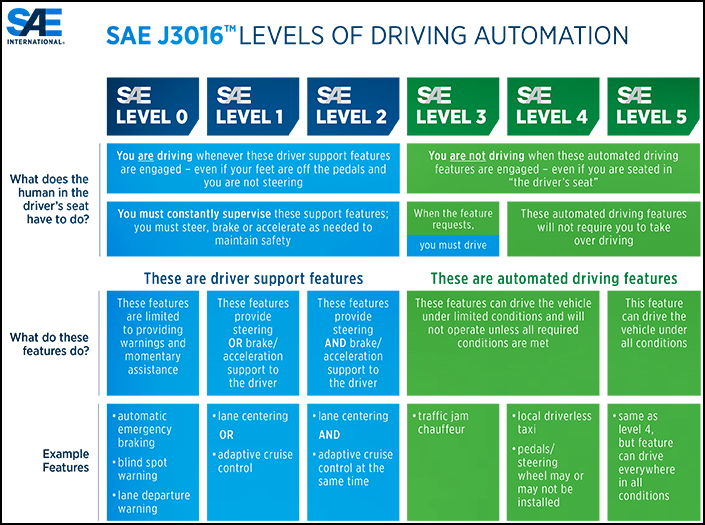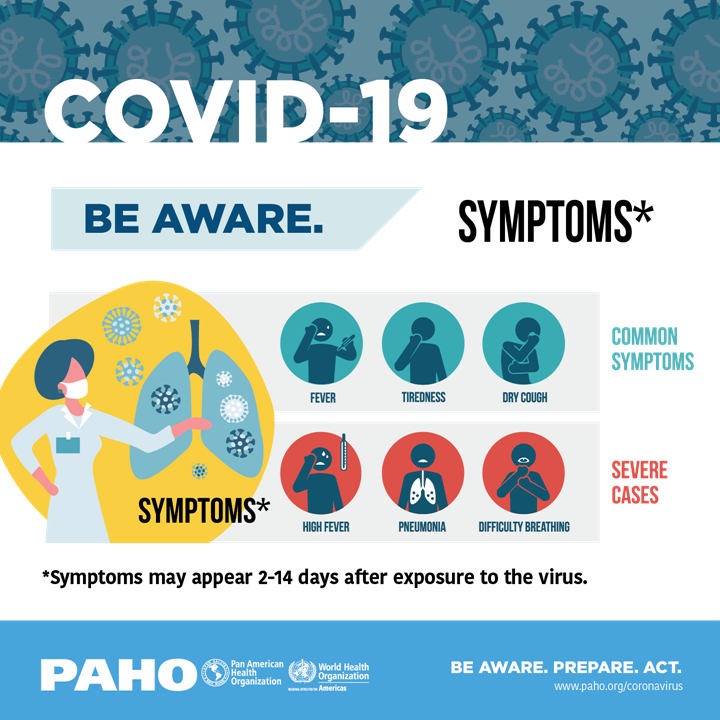Some day, people will travel in cars that can operate without human control. All that will be needed is to get in, state the destination, sit back and the car will drive itself there. Whether we can then use the term ‘driving’ is debatable if a human is not involved, but it will be a revolution in mobility. Such capabilities will be in what are called autonomous vehicles, and over the past decade, they have been development by many companies (some of which are not the global carmakers).
The American Society of Automotive Engineers (SAE) formulated a list of different levels of autonomy in 2014 which has been accepted by the industry. The document – SAE J3016 Recommended Practice: Taxonomy and Definitions for Terms Related to Driving Automation Systems for On-Road Motor Vehicles – is commonly referred to as the ‘SAE Levels of Driving Automation’ and also has the involvement of the International Organization for Standardization (ISO).
Many vehicles now at Level 2
SAE J3016 defines the 6 levels of automation for a vehicle, from Level 0 (no driving automation) to Level 5 (full driving automation) in the context of motor vehicles and their operation on roadways. Many vehicles with advanced driver assistance systems (ADAS) using radar or cameras are considered as having Level 2 autonomy. Even the Perodua Ativa (AV version) is able to meet Level 2 requirements.
Level 2 driving automation allows the computer to take over steering, acceleration, and braking but the driver must still pay attention to what is happening and be ready to take over control when necessary. In most cases, the systems help the driver rather than take over, thus reducing fatigue. In most systems, there is automatic emergency braking where the system can detect a possible collision and if the driver does not respond correctly, the brakes will be engaged automatically.

Moving to higher levels becomes more and more challenging as more autonomy is given the vehicle. This means that the environment around it must also be suitable for safe autonomous operation. For example, road lines must be clear for the camera to scan and use as lane references to guide the vehicle, and traffic control systems must be standardised. If the system is unable to recognise a red light and stop accordingly, then it would be very dangerous!

First approval for Level 3
For this reason, authorities in most countries are permitting autonomous vehicles only on specific sections of highways. While the manufacturers can develop their vehicles further, there is still a need to ensure safety for road-users so for now, Level 3 is still not common. Only Mercedes-Benz has met the demanding legal requirements for a Level 3 system, the first carmaker in the world to get approval. The German Federal Motor Transport Authority recently granted system approval for this on the basis of the technical approval regulation UN-R157, thus paving the way for offering such a system internationally.
In order for this to be done, the traffic laws had first to be revised for Level 3 systems and this was done in 2017. Other countries will also have to do likewise first before Level 3 autonomous vehicles can be allowed on their roads.
In Germany, the first customers of the latest S-Class with DRIVE PILOT will be able to enjoy Level 3 automation in the first half of 2022. This means they can drive in a conditionally automated mode at speeds of up to 60 km/h in heavy traffic or congested situations on certain stretches of the autobahn in Germany. The special DRIVE PILOT can take over the driving almost entirely so he or she can carry out tasks on the central display such as online shopping or processing e-mails in the in-car office. The system approval also applies to the EQS.
“For many years, we have been working to realise our vision of automated driving. With this LiDAR-based system, we have developed an innovative technology for our vehicles that offers customers a unique, luxurious driving experience and gives them what matters most: time. With the approval of the authorities, we have now achieved a breakthrough: We are the first manufacturer to put conditionally automated driving into series production in Germany,” said Markus Schafer, Member of the Board of Management of Daimler AG and Mercedes-Benz AG, Chief Technology Officer responsible for Development and Purchasing.
The technical approval regulation with which such a system can be certified did not come into force until the beginning of 2021. Since then, it can be implemented in Europe – an opportunity that Mercedes-Benz was quick and the first manufacturer to seize. With the revision of the Road Traffic Act for Level 3 systems, Germany was the first country to create a legal basis for the use of these systems.
On specific sections of autobahn
Mercedes-Benz is initially offering DRIVE PILOT on 13,191 kilometres of autobahn in Germany. Extensive test drives for this system are already underway in the USA and China. As soon as legal provisions are in place, for conditionally automated operation, the technology will be offered to customers.
On specified autobahn sections and where traffic density is high, DRIVE PILOT can offer to take over the driving, initially up to the legally permitted speed of 60 km/h. When the driver activates DRIVE PILOT, the system controls the speed and distance, and guides the vehicle within its lane. The route profile, events occurring on the route and traffic signs are taken into consideration. The system also reacts to unexpected traffic situations and handles them independently, eg by evasive manoeuvres within the lane or by braking manoeuvres.
Redundant systems for extra safety
DRIVE PILOT builds on the surround sensors of the Driving Assistance Package and comprises additional sensors that Mercedes-Benz considers indispensable for safe conditionally automated driving. These include LiDAR, as well as a camera in the rear window and microphones, especially for detecting blue lights and other special signals from emergency vehicles. There is also a wetness sensor in the wheel well.
As well as the sensor data, the DRIVE PILOT receives information about the road geometry, route profile, traffic signs and unusual traffic events (accidents or roadworks) from a digital HD map. This is made available and updated via a backend connection. The S-Class with the optional DRIVE PILOT also has redundant steering and braking systems and a redundant on-board electrical system, so that it remains manoeuvrable even if one of these systems fails and the safe handover to the driver can be ensured.
If the driver fails to take back control even after increasingly urgent prompting and expiry of the takeover time, eg due to a severe health problem, the system brakes the vehicle to a standstill in a controlled manner and with suitable deceleration. At the same time, the hazard warning lights and, once the vehicle has come to a standstill, the Mercedes-Benz emergency call system is activated and the doors and windows are unlocked, to make access easier for anyone offering assistance.

During the conditionally automated journey, DRIVE PILOT allows the driver to take their mind off the traffic and focus on certain secondary activities. This is the major difference between Level 2 and Level 3 where, for the former, the driver must keep looking ahead and around at all times (no checking messages on the phone). With Level 3 (and above), the driver can do messaging via In-Car Office, surf the internet or even watch TikTok clip. In DRIVE PILOT mode, applications can be enabled on the integrated central display that are otherwise blocked while driving.
Better than GPS
The top priority for Mercedes-Benz when introducing such a system is safety, which includes high demands on operational reliability. The exact location of the car is determined using a highly accurate positioning system said to be much more powerful than conventional GPS systems. In addition, data obtained from satellite navigation are matched with sensor data and data from an HD map. Sensor data collected by LiDAR, camera, radar and ultrasonic sensors can be, for example, information on road geometry, route characteristics, landmarks or traffic signs.
The HD map provides a 3-dimensional street and environment image. The map data are stored in back- end data centres and updated constantly. Each vehicle also stores an image of this map information on board, constantly compares it with the backend data and updates the local data set if necessary. The HD map thus offers stable positioning through a representation of the surroundings independent of shadowing effects or a covered sensor. This high-precision map differs from maps for navigation devices by its higher accuracy in the centimetre rather than metre range and its detailed intersection and track model.




























